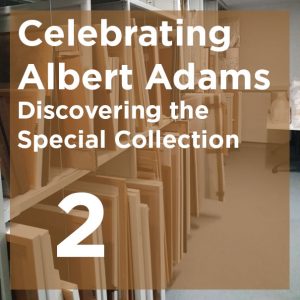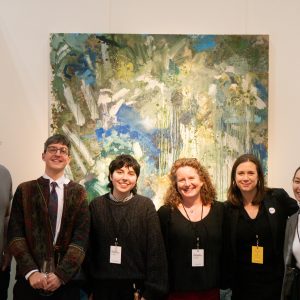
Celebrating Albert Adams – Discovering the Special Collection p.3
Hello Curatorial Intern Cami O’Hagan here, this will be my final takeover for spotlighting these artworks. It has been a privilege in showing you my journey in discovering the work of Albert Adams through auditing the University’s Special Collection! Read more about the Special Collection here!




